|
EXPERIMENTAL BLOOMERY IRONMAKING
in the Weald of Southern England
in the 21st Century
NEXT SMELT
If you would like to see what goes on and/or join the team, please email: .
The pictures below were taken at our smelt in October 2012.
There have been further smelts during 2013-5, at the Pippingford site, experimenting with different sizes of tuyeres and blowing rates. We have been operating with 2 tuyeres, opposite each other, with a total blowing rate of about 15L/sec, using an electric blower. This blowing rate would be quite hard work using our two hand bellows.
PICTURE GALLERY
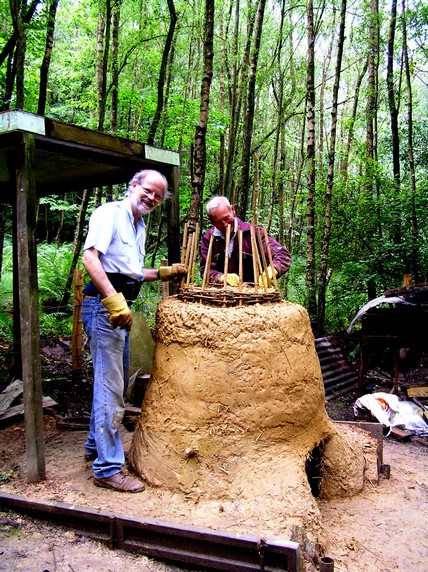
Structure of the furnace being built showing vertical canes with interwoven twigs.
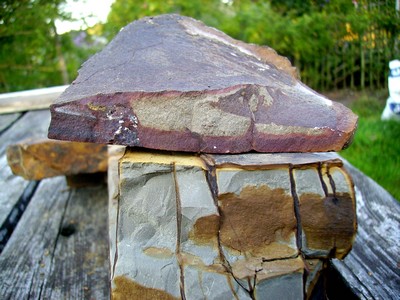
Scale … ore pieces about 350mm across. These pieces of as-found siderite iron ore [iron carbonate, FeCO3] come from the Benenden area of Kent. It has a high specific gravity of 3.9 when pure but is about 3.0 in practice. Any excessive sandy impurities [quartz, SiO2] or fossil shells [calcium carbonate, CaCO3] will cause the tap slag to become viscous and is liable to clog the bloomery furnace and stop the bloom forming correctly.
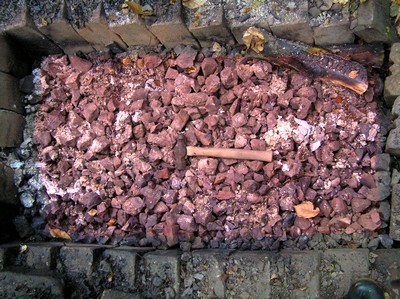
The ore being roasted in a wood-fuelled hearth to convert to the oxide [maghemite, Fe2O3], a magnetic form that is attracted to a magnet; a useful characteristic for checking that pieces are really iron ore. When roasted, the ore changes colour from grey to reddish-purple.
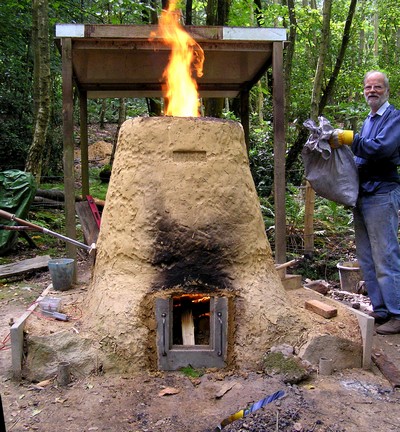
Preheating the furnace to 800°C, with charcoal.
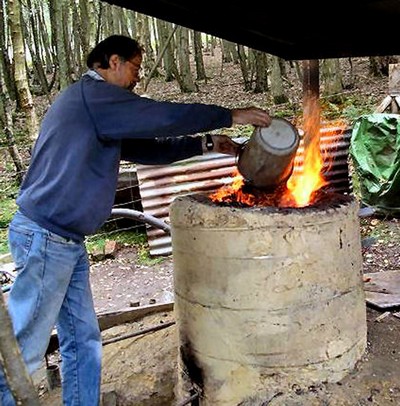
A charge of ore + charcoal is added to the (earlier) furnace; between 15 and 25 charges may be added for one smelt lasting a day. The roasted ore has been broken to roughly 10mm, by gently hammering to limit the dust produced (the dust may not add to the iron produced). Because as-bought charcoal is normally too large a heavy roller is arranged to roll along two rails about 20mm thick, this produces <25mm pieces; unfortunately, a certain amount of dust is also produced. A typical charcoal : ore ratio of 1:1 is used although 1:0.5 and 1:2 have been tried.
Hand-powered bellows with an earlier furnace and flow meter
Click on image for a larger view.
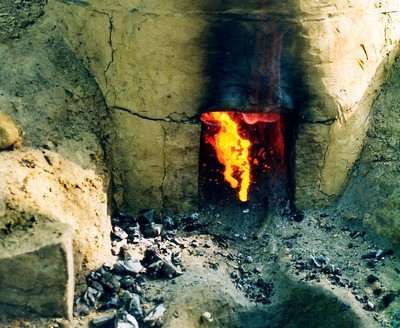
Molten slag [fayalite, 2FeO.SiO4 or Fe2SiO6] is tapped from the bottom of the furnace, thus making room for a larger bloom to form. Note, the apparent waste of Fe (iron) is a necessary evil that reduces the free-flowing temperature of the slag and effectively flushes out the sand [quartz] and other impurities.

Removing hot charcoal from the bottom of the furnace.
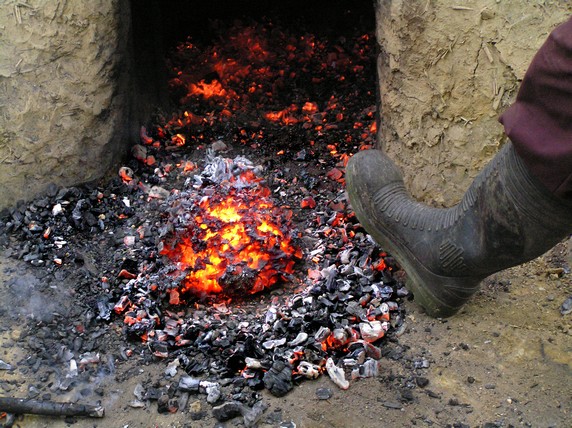
Removal of a bloom - scale: one foot.
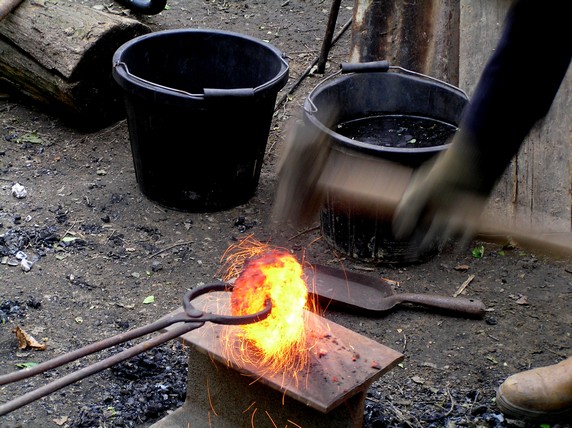
Hammering to consolidate a 2.25kg bloom.

CONSOLIDATING A WROUGHT IRON BLOOM SMELTED IN A BLOOMERY FURNACE
Fig.1 is all the forged iron from the bloom being consolidated by WIRG (see picture of iron being consolidated). Items “A” to “E” were forged by Mr. Liggins of Black Dragon Forge, Derbyshire, and “J” by John Baillie from WIRG.
Fig.1 also shows where Mr. Liggins tried to “draw-down” a bar, “E”, but was thwarted by a large crack appearing across the bar, as well as many smaller ones.
Fig.2. When cracks appear in iron being shaped during forging these cannot be “repaired” as they stand. The metal must be “folded over”, at the crack, and fire welded together to produce a thicker but shorted piece of iron, “A”, and forging the shape started again.
Fig.3. Samples “B” and “D” are pieces of forged iron that have completely cracked apart, these show a very rough, oxidised surface; this is the reason they cannot be forged together.
Fig.4 shows sections across the two formed bars. Sample “J” was minimally forged by John Baillie whilst “C” was forged for much longer by Mr. Liggins, hence the smaller voids; undoubtedly the remains of voids within the original bloom.
From the original 2250g sent to the blacksmith at Black Dragon Forge (see picture of iron being consolidated) just 707g of usable iron was returned. This could be improved with greater experience of bloom smithing.
© Wealden Iron Research Group 2012
| 
